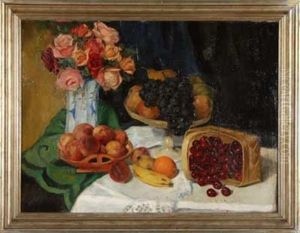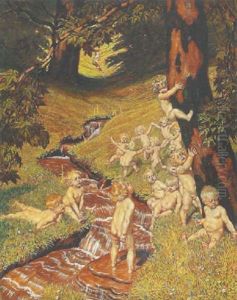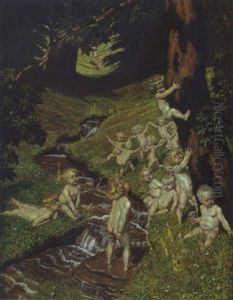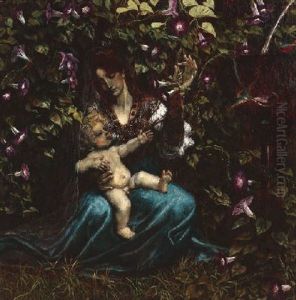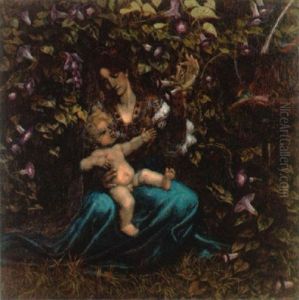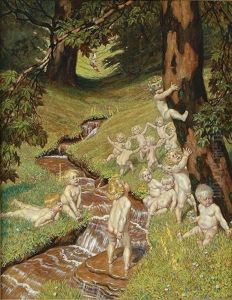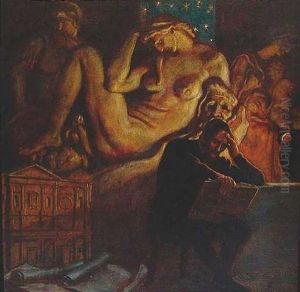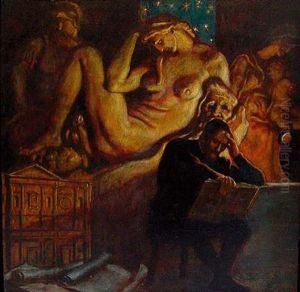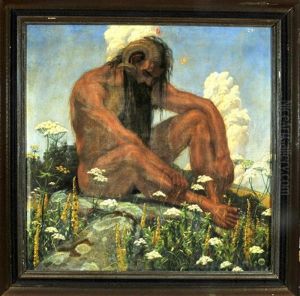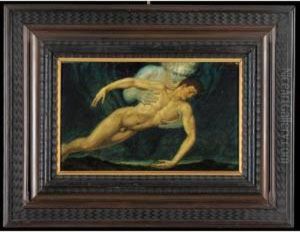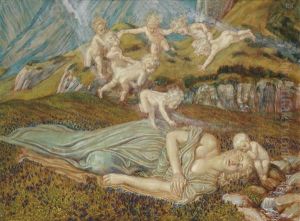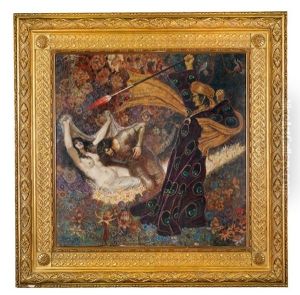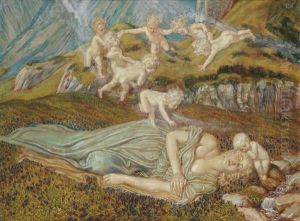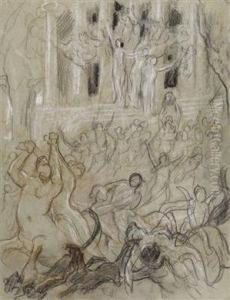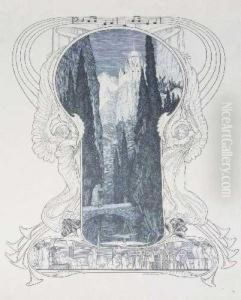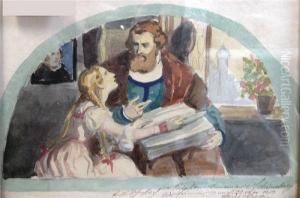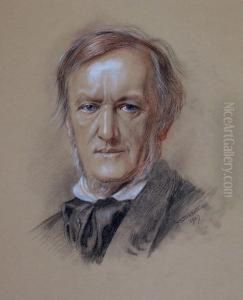Franz Stassen Paintings
Franz Stassen was a German painter, illustrator, and etcher born on February 12, 1869, in Hanau, Germany. Stassen is often recognized for his contributions to the Jugendstil movement, the German variant of Art Nouveau, which emphasized a distinctively modern style, focusing on organic shapes, bold contours, and a decorative aesthetic.
Stassen's upbringing in a creative environment, with his father being a goldsmith, likely had an influence on his artistic development. He studied at the Academy of Fine Arts in Berlin, where he was influenced by the prevailing artistic movements of the time. His early work was marked by romanticism and a fascination with Germanic mythology and folklore, subjects that would remain central to his art throughout his life.
During his career, Stassen became particularly known for his book illustrations. His illustrations for an 1898 edition of 'Das Nibelungenlied' ('The Song of the Nibelungs'), a medieval German epic poem, are among his most celebrated works. These illustrations reflect his passion for mythology and legend, with a visual language that combines the heroic with the mystical.
In addition to book illustrations, Stassen also produced large-scale murals, paintings, and etchings. His style evolved over time, but he consistently demonstrated a mastery of line and detail. His work was part of the symbolism movement, which sought to express the more spiritual and emotional aspects of human experience, often through mythological and dream-like imagery.
Stassen's art was well-received and he earned a number of commissions for public and private works. He was also a member of various art associations and participated in numerous exhibitions throughout his career. Despite the changing artistic trends of the 20th century, Stassen remained dedicated to the romantic and neo-classical styles that had shaped his early years.
Franz Stassen continued to produce art until his later years, passing away on April 18, 1949, in Berlin. His contributions to the Jugendstil movement and his revival of Germanic myths through his art left a lasting legacy in the world of illustration and painting. Today, his works are considered an important part of the German artistic heritage of the late 19th and early 20th centuries.
